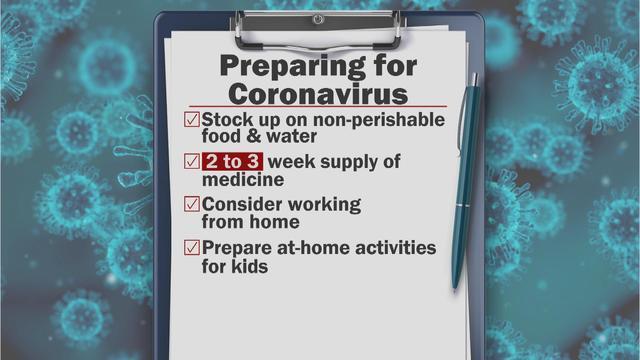
Coronavirus Pandemic – What are the right ways to work from home?
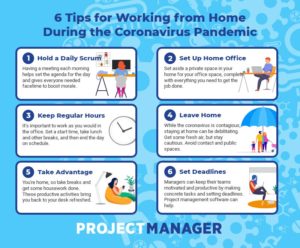
Coronavirus Pandemic – What are the right ways to work from home? Work from home on a Coronavirus Pandemic needs more concentration and dedication to be more productive.

Most global companies, including industry giants, have rolled out mandatory work-from-home policies in the last few weeks amid the spread of Covid-19. And it’s realistic for most people to assume that shifting to the ‘home office’ will become the new normal for a while.
Some employees will be their first time working from home. It means figuring out how to stay on task in a new environment may not lend itself to productivity. But there are many ways to deliver results and avoid going stir-crazy, from setting up a proper workspace to the way you talk to your team. This blog is a quick read to know how to set up a good working space while working from home.

How to set up a pleasant working environment while Coronavirus Pandemic – work from home?

- Crank up the communication
Whether coronavirus is there or not, the key to working efficiently from home is clear communication with your boss. You should exactly know what is expected of you.
Have clear-set expectations for day to day communications. Ask your boss if they don’t mind having a ten-minute call to kick off the day and wrap up the day. Often, managers just haven’t thought of it.
Most people spend their working days close to their boss. It let their communication easy and effortless. But that is all out of the window with remote work. And communication breakdown will be even more likely if your workspace isn’t used to remote working. For example, your manager might not be used to managing people virtually. Or your firm might not have a ready-to-go suite of tools for remote employees, like the chat app or video conferencing app.
But even for those people accustomed to it, working from home can feel unstructured and isolating. Loneliness can make workers feel less motivated and productive.
So, when you do communicate with your manager and the team from your home, make the conversation maximum richer as face-to-face communication.
- Treat it like a real job.
There is also some timeless Work From Home tips to call upon. For example, just because you can lounge round in your pyjamas doesn’t mean you actually should. Take a shower and get dressed. Treat it like a real job.
If you have no home office, do as much as you can to generate an ad hoc, bespoke space exclusively for work purpose. Without a well-equipped home office space when remotely working can cause a temporary decrease in productivity.
So, instead of lying on the bed with a laptop, try something deeper. The fix could be something very simple as moving a nightstand into a corner far away from distractions. You can plop down your computer and sitting in an upright chair like you would at your office desk. It also serves as an essential signal to those who live with you that you are ‘at work’.
- Be inside your own boundary
Create your own boundaries within your home that your family members understand you are working. With a dedicated workspace where you can focus, it becomes easier to unlock the benefits of remote work.
Yet it’s also vital to bookend your day. You should have the ability to unplug after work. If you cannot commute or enter and leave a physical home office provides a clearer boundary to the workday. It helps you have the right mindset like a twenty-minute coffee in the morning and then exercise right after the work to open and close the day.
Even if childcare is not an issue, it is still easy when you are home to think ‘Oh! I have laundry to do, let me do it real quick and so on. You have to put yourself in a mind-frame that you are really working.
Still, even with these tools, the abrupt and enforced nature of the transition from office space to a home environment could leave you struggling to get accustomed to the change. The coronavirus is pushing everyone into working from home, which is extreme to many people.

How to remain positive in a negative office environment?
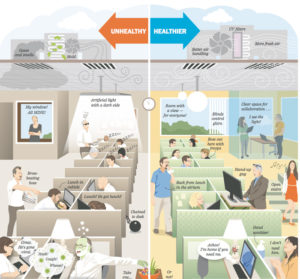
To be confident in a Negative office environment. Ways and means to be concrete in a Negative office environment.
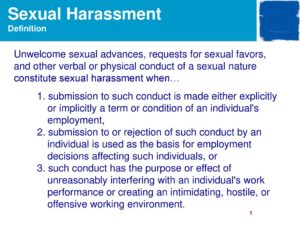
Today, we are running through a fast-paced business age. No matter the industry or profession, you will spend the majority of your weekdays hours at the office. A lot of people spend more time with their co-workers than with our families. And some days, the office feels more like our primary residence. It makes you feel distressed. So, how can we make it more tolerable?

The best remedy is making your work environment more positive. If Creativity, productivity and happiness go up, like a counterweight, stress levels sink. As a business owner or a leader, that’s the kind of workplace you strive to create. Since you are going to spend most of your workdays at work; you want it to be a place that inspires and nurtures your team and yourself!
Here are seven tips for building a work environment where your team can thrive:

How to build positivity in a Negative office environment?

- Begin with gratitude.
We believe that it is a privilege, not a right, to work together. Begin each of your weeks with a 15-minute all-hands team meeting where the first item on the list is team kudos. Give your employees a vehicle to express appreciation for one another in a public forum. It raises the morale of the whole group, and establishes a positive tone for the week and helps employees feel acknowledged and valued. Beginning with gratitude in any professional situation sets the intention of appreciation, which will permeate throughout the company.
- Create a safe atmosphere.
There is nothing damaging than toxicity in the workplace. It stifles new ideas and inhibits collaboration. Creating a safe work setting means eliminating negative personalities Respecting every idea, whether it is from an intern or a tenured senior employee. Lead your people with honesty, integrity and vulnerability to help them feel safe.
- Don’t put your dirty dishes in the sink.
This metaphor means, “Don’t leave a mess for anyone else to clean.” There is nothing more frustrating picking up a project from where someone left off. You will find that some files are missing, the work is a mess. Or someone saved a critical document to their desktop a few moments before boarding a flight for a vacation. Not leaving a mess is the functional definition, but the emotional interpretation is, “Respect other’s time.” If someone else has to duplicate your efforts or take time away from their day to day responsibilities to hunt for a missing document, you don’t care about their time. Time is our most valuable currency. When we are not respectful of our colleagues’ time, we are contributing to a negative workplace environment.
- There are only opportunities in business, no problems.
When our emotions are high and stress levels skyrocket, even the smallest workspace issues can seem like towering boulders. Tell your team that what they are experiencing is not a problem. It is an opportunity to reflect, analyse and evaluate for the next time. And there is always the next time; we’ll do better. Also, try to find irony or humour in every situation. Make your team members smile by bringing perspective to the situation. It can lighten a very emotionally charged room.
- Consistency is the key.
There are several new trends in company culture. It includes flex hours, team building, open workspaces, unlimited paid time off, bringing pets to work and the list goes on. It is easy to be tempted by what may seem like valuable workspace perks or try to replicate what competitors are offering to employees. However, the same approach won’t work for every company. You should consider consistency as a key, rather than getting distracted by the latest craze for professional culture. Although change can be healthy, meddling a good thing can be detrimental. It affects the cultural balance of your organization.
- Encourage positive thinking.
Life is short. Why waste time on negative behaviours that don’t align with your business’ moral compass? Encourage your team to think all the time positively. Sometimes things seem to be spinning out of control. We didn’t achieve the anticipated result. But positive thinking will eventually cultivate positive outcomes. Set weekly, monthly, and yearly positive plans as a group. It will help to align your team and ensure that everyone is facing the same North Star.
- Don’t sacrifice the important for the urgent.
It is easy to punt team one-on-ones for an urgent meeting or client call. But that connection with your teammates is crucial to maintain positive office culture. As a leader, you are the cheerleader of the firm and the glue that binds your organization together. Without a regular connection to your people, the mission, vision and energy of the business can quickly dilute. It can also degrade your cultural fibre. It’s okay to reschedule. Just don’t let essential conversations get replaced by abrupt demands and deadlines.
Dependability, structure, clarity and meaningful work all are ingredients. When this ingredient gets combined, it can culminate in a solid foundation for a positive workplace. Add your own awesome sauce and voila, and then you have the magic recipe!!


How to work under a bullying boss?

How to work under a bullying boss? A bullying boss in the workplace is a horrifying experience for any gender of the employee.ways and means to overcome a bullying boss.
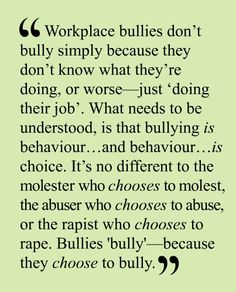
Is your boss bullies you constantly? The easiest way to answer this query is to check in on how you feel. Do you feel frustrated, scared, and dread going into the job as you get belittled, humiliated, neglected and cut down. Then, you are in a hostile work environment.
Typically, bosses who bully thrive on power and manipulate others. Unfortunately, the toxic boss may gain success from inducing fear in their staffs. But they will prove to have a shorter shelf-life when it comes to long term success.
Just know that you are not alone. The number one reason people swift their job is that they don’t like their boss. A toxic boss exists in almost every work environment. How will you handle it? Dive into the blog to know further.
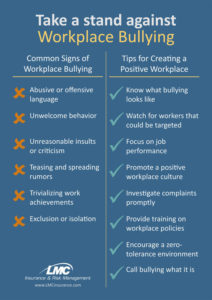
How to deal with a bullying boss?
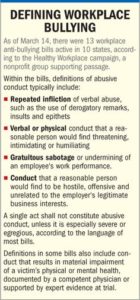
- Slip your focus from your boss to your work.
A bully is unlikely to change their behaviour, so your first option is to work to change yours. Instead of focusing on your intimidating boss, focus only on the details and tasks of your role. You have direct control over your performance. So, ensure you are focused on the right thing, which is your work, not your boss.
The more emotional strength you give your toxic boss, the more your boss will focus on you as his target. A bully boss is more engrossed in reading your vibe than examining your work performance. If your employer never gets your eye contact, he never gets the invitation to come into your emotional space. When you focus only on your job, you stop giving off the vibe of anxiety and fear over gaining approval from your boss.
- Understand the bully.
The bully boss, at his core, is an insecure, manipulative person who throws tantrums. They are immature and selfish. Most of you would not tolerate this type of treatment from your employer. The problem is your boss has a notable amount of control over your position. Due to this reason, you cannot meet fire with fire.
Tedious employers manipulate their demand-arsenal so quickly as it makes it difficult to meet their expectations or follow their direction correctly. It is a good thing to take detailed notes with dates and times, and details of conversations you have had with your boss. It helps you stay on task. You will have proof of what was said and requested, when and on what date it happened when your boss makes a move to gaslight you on what you think you are supposed to be doing. Keeping this log available with you helps you stay grounded in the facts and out of the fire of emotional drama.
It also keeps your boss in check with the fear that you may report him to human resources. Taking notes let you to stay organised and to call your toxic employer out on your terms.
- Set silent limits
Your body language is a great way to silently but efficiently deal with a bully boss. Turn your body away from him every chance you get. Give him the side of your body or the back of your body at all times. When you have to be face-to-face with him, focus on lifting your chest and your chin. This posture gently but firmly communicates that you are open to talk and not intimidated.
Bullies love to see people cringe. When your corrupt boss aggressively comes after you, it is natural to cringe. This posture will take over abruptly when under siege of emotions like humiliation or shame. When you focus solely on your body language, you covertly give yourself the upper hand. Your wicked boss will pick up on you having a stronger vibe. Then he will naturally respond less aggressively. Body language is a powerful communicator than words. Because the bully can turn your words around and use against you, but body language cannot.
- Set verbal limits.
Analyse how your employer treats you from an objective place. Make a list of the facts. You will speak less and get more accomplished when you approach him with facts and a strong physical posture. The more nervous you are, the more you tend to speak. When you have facts with you, you will set better limits. Then, you can stick to the facts without trying to convince him of anything or squeeze any empathy or understanding from him.
Knowledge is the power and facts are the knowledge you need. You must let your toxic boss know you will no longer tolerate the negative facts on your list in terms of how you are being treated. If your employer argues or starts acting out, leave the conversation and escalate to the person above him. Tell him that since he is unable to communicate rationally, you will be addressing your concerns to the top management.
- Build a network.
It is crucial to keep in communication with other employees who are also targets of your employer’s poor treatment. Encourage your colleagues to document dates, times and conversations they have with the boss. The more people associated with documenting the facts, the stronger the case will be when you approach human resources. It let them seek further train or terminate your corrupt boss. The more evidence you brought into human resources from multiple people, the clearer the pattern of abuse is to diagnose and treat.
- Tell top management and HR about the bully’s behaviour.
Let your superiors and HR know, through your documentation and meetings with your colleagues and boss, that you have done everything you can do on your own to cope with and abate your boss’s flagrantly abusive behaviour. Explain the impact the bullying boss has had on your physical, emotional and mental health along with how it has negatively affected your work performance. File a formal complaint and let human resources to instigate an investigation. Meanwhile, you may need to take paid leave to avoid even more abuse. Once your employer is made aware that he is being investigated, continue to work as you always have. It gives your boss the chance to show some change.

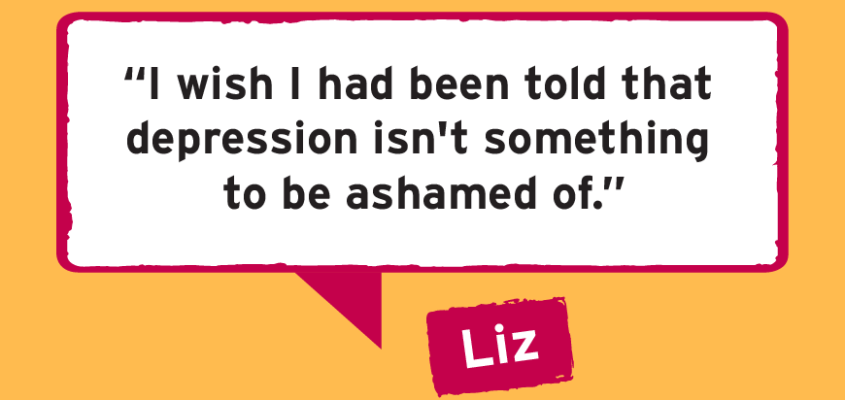
A few tips employers should know on how to handle workplace depression
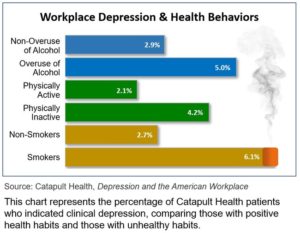
Why are more employers focusing on workspace mental health? Because they recognise it is costly to ignore. Depression costs employers a small fortune each year in loss of productivity. About half of workers with depression aren’t get treated. Yet with proper treatment, depressed people can get better. The key is to help them access adequate care.
Depression is a severe medical condition that not only affects the body, but mood, and thoughts. It can impact the way one eats, sleep, and functions. Depression will not spare a person like a passing blue mood. Without proper treatment, symptoms can last for weeks, months, or years. Appropriate treatment, often involving medication and counselling, can help most people who suffer from depression. You may notice changes in a staff’s behaviour, mood, or appearance.

What you might see in the workspace
- Persistent sad and empty mood
- Communicating a sense of helplessness, hopelessness, worthlessness, pessimism
- Uncharacteristic drop in productivity or increase in employee absences
- Signs of substance misuse
- Fatigue or loss of interest in daily activities
- Disturbances in eating patterns. It may result in noticeable weight loss or gain
- Crying, anxiety, or panic attacks
- The fallout from sleep problems, including tardiness or sleepiness
- Irritability, anger issues, agitation, conflict
- Difficulty focusing, remembering, or decisions making
- Persistent physical signs or pain that does not respond to treatment
- Veiled or direct talk of suicide
Not every person with depression will show all symptoms or have them in the same degree. These concerns may also be indicators of problems other than depression. It is not your job to make a diagnosis if you notice these signs. You need to help the person connect with an Employee Assistance Program (EAP). Either through the employer or with mental health support and services available to them.

How does Depression Impact the Workspace?

Depression left untreated, may have a severe impact on work performance. It contributes to presenteeism and absenteeism. Employees will be at work but not engaged or employees missing days of work. It may also adversely affect multiple areas of employee performance. Employees lose focus and decision-making skills. They struggle to do time management, completing physical tasks, communication and social interactions. Like most other health issues, early detection and effective treatment reduce the severity and impact of the situation.
Employers can play an extremely vital role in supporting the early identification of depression and improving access to care. It is an investment well worth making.

Tips for Employers

Awareness:
Educate your employees and managers about mental health conditions, including depression. Encourage them to seek help when needed. Mental health seems like a taboo topic. So, train managers and employees on how to start a discussion if they are concerned about the staff. Integrate mental health-related information into all health communication strategies. Include contents about depression in firms newsletters. Also, include it on the intranet and in other regular communication platforms for employees.
Consider an initiative that brings an in-depth discussion about depression out in the open. It encourages employees to seek help when they need it. This turn-key initiative offers employers with tools to:
- Enhance awareness about depression in the workspace and its impact on productivity;
- Promote early identification of symptoms; and
- Lessen the stigma surrounding mental health conditions.
Through this right direction, employers get access to a library of customizable high impact tools and resources. The materials are accessed by more than thousands of employers addressing workspace mental health.
The more employers increase the visibility of mental health, the more it will be normalized. It increases the likelihood that staffs will seek care when needed.
Here is helpful information to share with workers and managers to raise awareness about depression in the workspace:
What Depression Feels Like:
- Deep feelings of sadness
- Loss of Interest in daily tasks or social activities
- Difficulty in concentrating and slowed thoughts
- Forgetfulness and trouble remembering
- Trouble making decisions
- Trouble sleeping, or sleeping too much
- Feelings of worthlessness or inappropriate guilt
- Energy loss or increased fatigue
- Irritability, anger or tearfulness
- Weight or appetite changes
How Depression Looks to Co-Workers:
- Withdrawal from the team isolates oneself
- Indifference
- Putting things off, missed deadlines, accidents
- Seems “scattered” or absentminded
- Procrastination, indecisiveness, slowed productivity
- Late to work, afternoon fatigue, accidents
- Unsure of abilities, lack of confidence
- Low motivation, detached
- Inappropriate reactions and strained relationships
- Change in appearance
Accessibility:
Employers are uniquely positioned to motivate employees to get help if they are experiencing depression. One crucial step is to include depression screening in health risk appraisals (HRAs) and EAP programs.
Employers also need to inform their health plans that they want primary care clinicians. It is to conduct regular depression screenings and to offer collaborative care. This research-based care model has more than 80 studies. It shows its effectiveness in improving treatment results. Collaborative care is being provided in the primary care setting with a care manager. He is a primary care provider and a speciality mental health provider. Employers must need their health plans to turn on the CPT billing codes for collaborative care. It became available in 2017 and allowed providers to bill for the care.
Assistance:
Encourage the use of employee assistance and health programs. Early intervention is critical. Remind your workers about the accessibility of resources for staying mentally and physically stable and productive. Inform your staffs often on how to access mental health information and care quickly and confidentially. Push this information out during times of immense stress, during the holiday season and especially when there is an activity that employees may view as disruptive in the workspace and broader community.
When depression is addressed adequately in the workplace, it promises to lower total medical costs, increase productivity, lower absenteeism and decrease disability costs.


How to keep yourself sane in an insane work world?
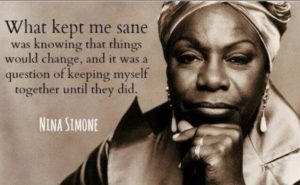
The insane work world is a common Phrase in the 21 st century. To stay sane in the Insane work world is the reasonableness of an employee.
Work can be hectic for some days. No matter how well a machine is oiled, we all get swamped every now and again. Some of the systems glitch, field trip, flu, or act of God may hit your office, and you are going to have to roll up your sleeves and clean it up. If work is bogging you down and you are online to ignore it, you are doing it wrong. Here are a few strategies to keep yourself calm, no matter how crazy your work gets.

How to stay calm in an Insane work world?

- Remind yourself it is only temporary
Life is temporary. Everything in life is temporary. You are temporary. No matter how bad your situations are right now, it is only for a short period. Suck it up and make it through. Then, you will be that much stronger, wiser, and more beautiful for it. You have been through worse than this.
- Meditate or Medicate
According to the holistic view, meditation is the answer all your problem. Your problems become more easy to overcome if you sit still long enough. Meditation can get you great success to keep yourself calm at work. All it takes is to shut your eyes for a few moments and listen to the rhythm of your breath. Feel your chest contract and expand as you take the breathe in and out for a few times. As little as four to five minutes, you will feel refreshed and renewed, making the work a little easier.
If you find things are getting to be too much and your anxiety or stress just won’t go away, you should go and see a doctor. Discuss accessing therapy or anti-anxiety medications. You should also know your limits if you decide to self-medicate, or you will end up hurting yourself more than helping.
- Stop Multitasking
You will bite off more than you can chew sometimes. Never do this. Just because you are facing a pile of paperwork does not mean you have to reach the summit in one shot. Having more work does not mean you have to do more at once. It’s not like you suddenly won superpowers when the work necessitates it. Continue at a pace you are comfortable with. Splitting your focus will just exhaust you out faster.
- Accept Failure
No matter how expert you are at whatever you do, no matter how much you practice daily, you will fail in life. It is unavoidable. Accepting the chance of failure makes it easier to get through the work. Things may worsen if you fail, but unless you are in the military or a bomb squad, few deadlines lead to actual death. Do your best to deliver better results. But if it doesn’t happen, you know at least you did your best.
- Take a Hike
Sometimes you should walk away from the office for a moment to gather your wits. Don’t be afraid to take a 15-minute stroll to keep your sanity despite the insane workload you are facing. It may feel like slacking off, but it’s better for you in the long run. Taking walks can invigorate your mind and body while giving you time away from the heat to formulate plans to get through it all. Try it out.
- Stop Surfing the Internet
Let’s be honest. You are procrastinating right now. There is no real business purpose for you to be online. You are avoiding work. If you weren’t dodging work by surfing the Internet, maybe work wouldn’t be so insane. You would get your tasks completed on time, and you would have time later on to surf the Internet. There is nothing happening on the internet that you can’t wait for another hour or so to read about. If anything important does happen, you will hear about it. So, focus on work.
Some workplaces are always insane. Think about what the hiring manager told you during the interview. Did they say there may be overtime occasionally, and suddenly you are finding out “occasional” means 12-hour days seven days a week? Temporary (i.e. 3–6 months) bouts of insane workloads are normal, but if you constantly feel like work is crazy, maybe this isn’t the job for you. Take a few moments to look at your life and decide if this is worth it. If it’s not, don’t be afraid to leave; just do it professionally.


How are social distancing works reducing the transmission of the virus?

How are social distancing works reducing the transmission of the virus?

Social distancing measures to wane the spread of the novel coronavirus are in place worldwide. These guidelines are for everyone around the world.
As per the strategy, we all need to reduce our contact with others. It will have impacts in terms of mental health and loneliness, especially for the elderly and other vulnerable groups.
So why should we follow actions that seem so extreme? The answer is simple. Social distancing works. It demotes transmission of the virus effectively. It also dwindles the impact on already stretched healthcare services.

How social distancing strategy impacts on people?
Social distancing is one of the effective strategies to reduce the novel coronavirus. Without these steps, an individual with COVID-19 can get expected to infect around three others throughout their infection.
One “generation” of virus infection takes around one week. After one week, that one infected individual will have become four infected individuals (the original infected, plus the three individuals they have infected).
After two to three week, each of the three newly infected individuals can be expected to cause three new infections. It leads to thirteen infections in total.
If this compounding effect continues, after six weeks, the initial infected person will have started a chain of transmission that has led to more than a thousand infections.
What if everyone keeps social distancing?
If everyone in the population lessens their contacts by one third, then each infected individual will only infect two others throughout their infection. It means that after one week, there will be three infected individuals in total.
It is similar to the first scenario. But, if everyone reduces their contacts by one third, after six weeks, the chain of transmission will have caused 127 infections. It is still a large number of infected individuals. But it is substantially fewer than the scenario of over one thousand infections that occurs without social distancing.
Of course, widespread control measures have significant effects on our lives. In China, case numbers have now fallen dramatically due to severe interventions. It is the outcome of social distancing measures they have adopted. They strictly lock down all the corona affected parts of the country. And they used all the possible methods to let people stay at home and low down the spread.
Measures like those must be enforced in the same way in other countries too. If everyone adopts them, social distancing efforts to reduce transmission can still be expected to have significant effects. Social distancing is particularly crucial. We do not know how much the daily transmission occurring from people who is displaying no or few symptoms.
As a result, we shouldn’t try and self-determine whether we pose an infection risk or not. Instead, all of us should take social distancing seriously. We should support each other to follow these guidelines during this challenging time.
Let us face it
The treatment of this pandemic worldwide has not been perfect. A couple of weeks ago, Donald Trump asserted that COVID-19 is no worse than influenza. It has been clear to experts that the death rate is ten times more powerful than other seasonal viruses or H1N1 “swine flu” virus that swept around the world in 2009.
But let us face it. When this virus surfaced in early January, no one of us could have imagined the situation we are in now. The best thing we can do going ahead is to put these things behind us.
This novel coronavirus will continue to have a greater impact over the next weeks and months, most possibly beyond that. While looking out for one another, especially those in vulnerable groups, we should do everything we can to stop this virus. Social distancing is of clear public health importance.

Many companies to furlough more than a thousand employees amid coronavirus fallout
Many companies to furlough more than a thousand employees amid coronavirus fallout. Job loss is there in the coming days with coronavirus epidemic.

Coronavirus spread rapidly around the world since it was first revealed in China less than three months ago. It has dealt an unparalleled shock to the global economy.

As governments are attempting to stabilize their economies, even the top-level companies facing a tough time. They navigate through many altered landscapes. It let millions of people face job losses and interrupted good and services. Following are the announcements from two businesses encountering fallouts due to the dangerous virus outbreak.

Marriott International about to furlough thousands of employees

The largest hotel company in the world, Marriott International Inc., announced Sunday it would furlough their corporate employees soon. More than thousands of employees are working in their headquarters in the U.S and across the globe. They will get furloughed as the company is forced to scale back due to the coronavirus pandemic. This decision, first reported by The Wall Street Journal Sunday, adds to massive recent payroll reductions that began last week.
Marriot is the world’s largest hotel company. Like many of its peers, it is trying to cope up with a plunge in demand due to the coronavirus.
On Sunday, Marriott said that they are furloughing about two-thirds of its 4,000 corporate staffs at its headquarters in Bethesda, Maryland. It is also furloughing around two-thirds of its corporate workers abroad. Marriot has about 174,000 employees globally. The furloughs are assumed to start in April and last up to 90 days.
Marriott added that it hoped to bring back their staff when the demand for hotel and travel accommodations has resumed, and the threat of coronavirus has subsided.
The firm stated Donald Trump, the president of the united states last week that it has begun reducing employees’ hours and starting to furlough what could eventually become tens of thousands of workers at its hotels. It is a big crisis for such a big company where more than lakh of people wear a Marriott name badge globally.
Furloughed workers in the U.S. will get 20 per cent of their salary while those who are still currently employed are facing heavy pay cuts and reduced work hours, the company informed President Trump last week.
U.S. hotel businesses have been seeking $150 billion in direct aid from the government for their employees.
Marriott’s chains and franchisees have owned 7,300 properties around the globe. It covers 30 brands over the different parts of the world, including W Hotels, Courtyard and Sheraton under its 92-year-old umbrella.
President and CEO of Marriott Arne Sorenson also enumerated several other corporate cuts in a video posted to the company’s Twitter on Wednesday that foreshadowed the furloughs.
Sorenson declared that the pandemic had a “more rigorous and sudden financial impact on our business than Since COVID-19 started spreading more swiftly from Wuhan, China earlier this year. Sorenson said that business in China has declined 90 per cent and was ranking in “75 per cent below normal levels” in other parts of the world. It forced hundreds of hotel closures across the globe.
As a result, Sorenson, who has been healing from pancreatic cancer, and Executive Chairman Bill Marriott will not receive salaries for 2020. And his senior executive team is taking a 50 per cent pay cut, according to the company.
3,500 Halliburton staffs in Houston furloughed due to difficult oil market
Headquartered in HOUSTON, Texas (KTRK), Halliburton announced it is issuing a compulsory furlough to 3,500 staffs at its North Belt facility in Houston.
Beginning on March 23, employees on the mandatory leave of absence will work one-week off, one-week on for up to two months. Employees will get paid for the weeks that they are on, but will not get paid for the weeks they are off. The benefits and health insurance of the employees will remain in place.
This decision comes due to recent challenges in the oil market after the coronavirus outbreak.
Helps could soon be on the way, though.
On last Tuesday, the Trump administration said they are about to send checks to the public within the next two weeks. They want to help people through the financial distress of the coronavirus crisis.
Congress still has to approve the plan.
It is not exactly clear about how much money would be received, but Senator Mitt Romney has suggested $1,000.


Things you shouldn’t do while developing a positive work culture
Positive work culture

Things you shouldn’t do while developing a positive work culture. Methods to create a positive work culture in the workplace.
As a leader, you must focus on building the company culture that you and your team can be proud of. However, several mistakes will send your culture backwards without care to avoid them.
People tend to forget the fact that building your company culture is all about creating a culture that both you and your team are proud of. That helps create more positive cohesion, which enables your business to grow.
Positive company culture is not about having ping pong tables, free Friday beers or other workplace perks. Great culture results in a group of engaged human minds who are keen to come to work. They should understand what the company mission and values are.
So, without further, let us explore a few common mistakes people make when designing a company culture. We also share some advice on how to avoid these happening.
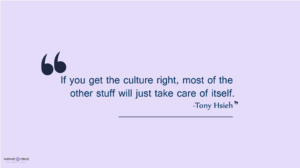
Common mistakes people make when designing a company culture
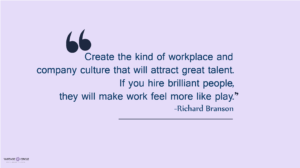
- Never build your company culture without proper planning
One of the mistakes found the most is that people just dive into ‘let’s create a great culture’ mode without proper planning. You should have a close look at the culture you currently have. Then, recognise the areas of improvement. You need to decide in which direction your business should run for the next 1-3 years. Then, revisit your mission and vision statements.
If you don’t plan for these sorts of activities, you are setting yourself up not to get the results you are awaiting.
- Lack of communication
Another mistake to avoid is not communicating your culture plans with your team. Ensure your team, including middle or senior management, know what your culture strategy is. Inform them what part they are expected to play in reshaping the cultural change.
Your people aren’t telepathic. They need you to communicate what your plans are, and where you feel the current culture is letting down yourself and the team. Being aware of such issues is the first step toward resolving them; you need to share this with others to work for it.
- Focusing on the negative
As a leader, you have to play a huge part in setting the tone of the firm. Be careful of your mood and what type of energy you are spreading to your team members. If you believe there are any negative element in the current culture, walking around moaning about it won’t help resolve this.
If you want to be a friendly person who carries positive energy to the office, start with proactive ideas on fixing the problems, instead of complaining or spreading negativity.
Work to banish negativity in your firm before it starts spreading.
- Making poor hiring decisions
Speaking of your team, building a positive company culture will never happen with poor hiring choices. There is an old adage that says ‘Hire slow, fire fast’. If you have employees who are spreading negativity or constantly undermining their managers, it may be time to let them go.
During your recruiting process, you may feel you have found a brilliant candidate with the right skill set to move your firm forward. However, you should also analyse these candidates for cultural fit.
If you had to choose a candidate for his technical skills, remember that you can train anyone for skills. The same will not go for training someone to change their personality or characteristics.
- Lack of goal setting
Goals are a vital part of building a company culture that you can be proud of. Goals motivate all of us to get focused and work toward shared results.
However, you should learn how to prioritise your goals properly. It is an essential skill that will help you and your firm succeed in the race. Remember that great leaders balance short-term thinking with long- term planning and thinking.
- Overlooking social needs
Another common mistake to avoid is not being concerned about the teams’ social needs. Great leaders encourage friendships at the office as it helps to create a family-style culture.
Employees do not want just to leave – they want a meaningful work experience that includes them being actively involved. So try to pick a few useful employee engagement ideas that would work for your team members, and run with them.
- Having no defined company values
A common happening with people is that they have no written values or mission statement, which is a way to express what behaviour and values are not acceptable in the office. Ensure that you and your colleagues also display these qualities that are shown in the values.
- Don’t be so serious
Every person loves a little fun in their lives. So, never forget to enjoy some laughter and smiles in the office. You are greeted with a smiling face often. Or you heed well wishes of “Good morning!” getting exchanged by your colleagues at the corner of the office.
Does this happen in your workspace? Ensure to be approachable by your team members, and encourage a little laughter here and there.
- Building your company culture is not once-off
Finally, the last and the least mistake are all too common. Some employers have the wrong idea of culture as being a checklist item that you can change, tick off and forget.
That is far from reality. Positive company culture needs frequent tending and direction. You should regularly evaluate how things are going, and what areas you should focus on more for the next quarter, six months or year.

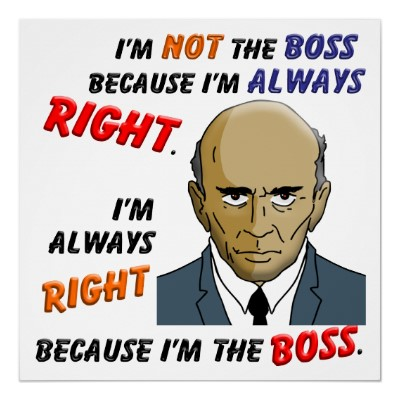
What is the best way to correct your boss, politely?
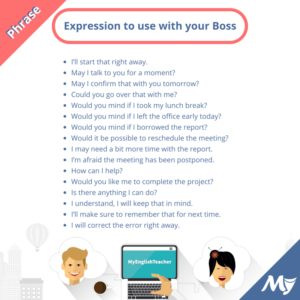
What is the best way to correct your Boss politely? The Boss can be wrong at some times. Best methods to correct your Boss on times when he is wrong in his judgment.

What is the best way to correct your boss, politely?
Every one of us likes to think they are on the right boat, but we can’t be right all the time. People often hesitate to accept they did the wrong deed and blamed others. But the mistakes made by managers and leaders can be particularly costly. In some cases, it can be disastrous.
Reputations are built and broken, money made and lost, and success earned and risked based on the decisions they make. But the more power managers have in the organisation; the less likely employees are to pick them up on errors, because, well, they are the boss.
It is more important to speak up when you know that your boss made an error. But the prospect of doing so can disrupt even the bravest person. Your boss may want probably the one who hired you and who signs your paycheck. He or she is the one link above you in the food chain. He might not appreciate being deceived by a “subordinate.”
- So, will you risk yourself telling him about his error?
- Or will you bite your tongue and leave the firm to sort out the mess?
If your organization’s wellbeing and your integrity matter to you, it’s vital to conquer your fears and speak up. It may feel unnatural and unsafe, and it may go against your office culture, but, when you are graceful and adept, you can help your boss to put things right without upsetting anyone.
This blog will guide you through some of the essential points to consider when you have to tell your boss he is wrong.
Eight Tips for Raising Your Concerns or correct your boss
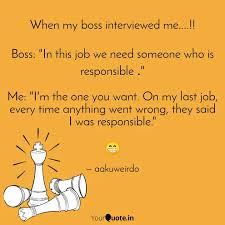
- Do Your Homework
You must be sure that your manager has made an error before you mention it. Keep in your mind that he likely has access to more information than you and that he could be right. Double-check the issue, because flagging something wrongly will only make you look out of touch.
You will also need to develop at least one potential solution that you can offer. Try to support your suggestions with data. Then, you may provide insights that your manager doesn’t have. Whether or not your solution gets approved, having a remedy ready will exhibit your initiative. It gives you credibility, and let you move the conversation past the mistake to focus on putting things right.
- Check Your Motives
Before you knock on your manager’s door, take a moment to think whether it’s worth mentioning his error. It is probably the best to let minor matters drop, so as not to appear moaning, critical or undermining. It will also make any intervention that you make in the future far more impactful.
Consider whether you feel like speaking up to be contrary or nitpicky. You could make the matters a whole lot worse, without good cause. But if there is a solid business reason to worry, or if the mistake might damage your manager’s reputation, he may be relieved to hear your concerns.
- Time It Right
Choosing the right time to grab your boss’s attention is vital to correct your boss. Don’t expect to march into his office with a list of queries and receive a warm welcome, or to raise the point in a team meeting and be thanked for it. Complex discussions will most likely go well when you allow your boss to pick a time when he can give you his complete attention.
However, if you spot any immediate and critical problem unfolding, don’t hesitate to inform your boss. You may have little choice, but you should speak up publicly before it is too late. Just remember that it is still your boss’s responsibility to decide how to proceed.
- Show Respect and Humility
Speak to your boss privately whenever possible. Don’t publicize the issue and embarrass him in front of other people.
If it’s an emergency raise the issue respectfully if you don’t have an option to speak to him privately. Your tone should be in a way that doesn’t challenge the chain of command or threaten your manager’s position. If he shuts you down in the middle of the conversation, accept it, and take up the matter again later behind closed doors.
Start by politely asking permission with him to discuss a complicated issue. It gives your boss a moment to brace himself and to invite you to continue. If everything is well, move on in a spirit of respect. Maturity, empathy and humility can probably ease the situation, whereas being opinionated, gloating or acting as you know more than your manager will “go down like a lead balloon.”
It is essential to stay professional and to focus on the business, even if you are motivated to speak because of how your manager’s mistake will impact you personally. The last but least thing you want to do is to sound as if your interests matter more than the firm’s, or to zero in on your manager’s personal failures. So, focus on how his error will affect your team’s goals and the firm’s mission.
- Mind Your Language
Be careful when you use words like “mistake” and “wrong.” An “I told you so” voice tone and blunt language apportions blame will make it appear as if you are out to “score a win.” If your manager thinks that you have come to expose or insult him, he will just dig in or, worse, retaliate.
So, be polite and courteous. Use less emotive, more collaborative language. Lead your boss into a problem-solving session instead of a sour argument. Try to clear the route for him to get into your ideas without taking offence or losing face.
- Escalate Your Concern Cautiously
If you feel that your manager’s error has financial, legal or health and safety implications, you could be justified in escalating your concerns. The HR department is often an excellent place to go to test out your thoughts, in confidence before turning to your manager’s boss.
Again, ensure to control your emotions and to moderate your language. Remember that your reputation is at stake, too.
If your boss’s actions are especially severe, or even illegal, you must put your concerns in writing, to cover yourself. You might want to take more robust action, too. But wait for a moment to think about it twice, because whistleblowing can itself have severe consequences.
- Admit Your Own Mistake without hesitation
At some point in this process, you may find that it is you who made a mistake. Your reaction for being corrected can matter as much as how you told your manager that he was wrong. Embrace the correction with good grace and offer an apology if appropriate. Otherwise, you could seriously injure your relationship with your boss.
- Let Go
Sometimes, you have to accept that your manager will press ahead. Maybe you failed to convince him, or he can’t be seen to change his mind. Whatever be the reason, when it becomes clear that he is “sticking to her guns” it is usually best to bow out gracefully and avoid raising the matter again.
In some instances, it might be wise to make a note of the fact that lead you raised the concern, in case of future investigations.
Why It’s Crucial to Say “Stop”
By gathering up the courage to let your manager know when he is wrong, you could prevent a disaster, save a reputation, or protect a career. It could make you a more valuable employee. Speaking up might feel uncomfortable, but it’s essential to do it because unchallenged authority can lead to catastrophe.
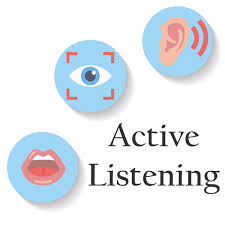
How can active listening be a secret weapon to build strong business relationships and achieve its goals more quickly?
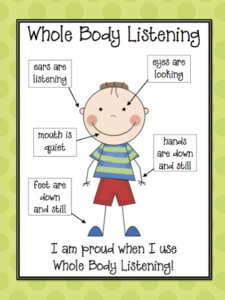
“Of all the skills of leadership, listening is the most valuable — and one of the least understood. Most captains of industry listen only sometimes, and they remain ordinary leaders. But a few, the great ones, never stop listening. That’s how they get word before anyone else of unseen problems and opportunities.”
— Peter Nulty, Fortune Magazine

Active listening is the ability to focus entirely on a speaker. It helps understand their message, grasp the information and respond thoughtfully. It is far distinct from passive listening, which is the act of hearing a speaker without retaining their message. Active listening is highly valued interpersonal communication skill. It ensures you can engage and recall specific details later without needing information repeated.
Active listeners use verbal and non-verbal techniques. It shows and keeps their attention on the speaker. It not only supports your capability to focus but also helps assure the speaker can see that you are focused and engaged. Never think about and mentally rehearsing what you might say when the speaker is done his words. Instead, the listener carefully considering the speaker’s words and commits the information to his memory.
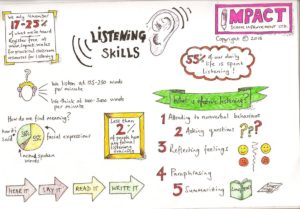
“To say that a person feels listened to means a lot more than just their ideas get heard. It’s a sign of respect. It makes people feel valued.”
— Deborah Tannen, author and professor of linguistics, Georgetown University
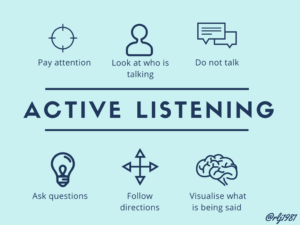
What is active listening?
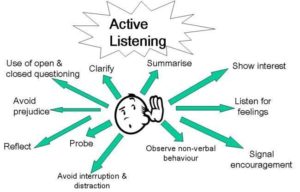
The importance of active listening in the workspace
Are you seeking a new job opportunity, striving to earn a promotion or working to improve in your current role? Then, improving your active listening skills will help you succeed. Active listening is similar to critical thinking and conflict resolution. This soft skill enables you to enhance your value as an employee.
- Building Trust:
You and your employees will become happy when you meet each other’s respective goals. As an employer, it is your organisational success. And for your employees, it is the tasks and objectives they have entrusted to complete. Therefore, it is vital to have trust in each other for healthy work experience.
Tick the following points to aware of the fact that help you build trust:
- To lend an ear to your people.
- To be honest and supportive.
- To be non-judgemental.
- To have healthy communication with them.
To tick these points, you must have a great understanding. It can get developed by active listening. It will help align your words and actions and help build trust.
- Productivity:
Active listening has endless benefits when it comes to employee productivity.
Sometimes, higher managers do not hear the views and ideas of the employees. It fuels employees’ resentment, which results in low productivity. So, you must get proper feedback and consider the opinions of the employees. It is necessary for a healthy workplace and performance. It is also inevitable to ensure that the stream of communication flows from both the direction. Then only a culture of mutual trust and understanding can get developed. It is always a two-way process.
- Resolves Conflicts:
Conflicts and mishaps are unavoidable in any workspace. The reasons for this can range from a minor error or a major disaster.
Disputes, diverse viewpoints or a lack of recognition often create conflicts in the workspace. Nothing is there a good communication cannot resolve. Here when we say ‘good communication’, we mean active listening.
We often fail to understand or respect other’s opinions as we never see things from their point of view. Our sense of self-righteousness also interferes here. Active listening helps in understanding other’s perspectives and feelings and helps us appreciate them. It not only helps in resolving conflicts but also helps foster a culture of respect.
“Most of the successful people I’ve known are the ones who do more listening than talking.”
— Bernard Baruch, American financier and presidential advisor
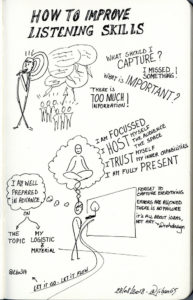
Strong Work Relationship:
It is crucial to forming healthy work relationships in the workspace for healthy work experience. There are two types of listening. They are ‘listening to understand’ and ‘listening to respond’.
People who listen to understand can form better relationships, and they are more empathetic in their approach. The same holds for work relationships. The more members in a workspace follow this approach, the better work relationships they form.
- Self-Empowerment:
Self-empowerment helps you boost your confidence and let go of your agendas. You should practice active listening and understand what is beneficial for you in the workspace. It expands your outlook in that direction and empowers yourself. You become more aware of your work atmosphere. You will communicate with your peers and colleagues with much ease and confidence.
- Acceptance:
Every firm has its own culture, and each member adds value to it. The root of this culture begins with acceptance. Yes! Acceptance of its values and mission by all its members.
For every company to succeed, both its employers and employees must be aligned with the common goal. They need to accept each other for their respective parts. They should actively listen to each other while carrying out their job duties.
At the time of onboarding new employees, management must listen to their feedback and views on various aspects of the company. It reduces confusion and gives a sense of acceptance to them. Therefore, active can be a great morale booster.
The Bottom Line
Active listening is a skill that can get acquired. And if you have arrived at this part of the blog, then we assume that you would ready to practice active listening in your workspace. We hope the tips mentioned above help you achieve that or at least educate you on the topic.
Remember! Understanding and encouraging the speaker to speak, focus, and keeping broad perspectives is the key.
“You have to be willing sometimes to listen to some remarkable bad opinions. Because if you say to someone, ‘That’s the silliest thing I’ve ever heard; get on out of here!’ — then you’ll never get anything out of that person again, and you might as well have a puppet on a string or a robot.”
— John Bryan, former CEO, Sarah Lee Corporation
End of content
No more pages to load




